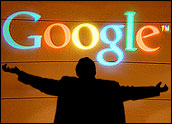
With more than 60 million users, Twitter clearly is a successful social media platform. However, the question of whether it also can be a successful business has yet to be answered.
On Monday, Twitter proved that it’s serious about making an effort to become a profitable enterprise when it banned third parties from using the Twitter application programming interface to create programs that drop ads into Twitter conversation streams. This means Twitter — which recently announced plans to launch its own advertising program — will retain exclusive rights to place ads inside tweets.
This new policy was revealed in a blog post titled “Enduring Value,” which outlines Twitter’s plans for maintaining the longtime value of its platform. The post, authored by Twitter Chief Operating Officer Dick Costolo, said third-party ad networks are being banned because they “are not necessarily looking to preserve the unique user experience Twitter has created. They may optimize for either market share or short-term revenue at the expense of the long-term health of the Twitter platform.”
Promoted Tweets
Twitter announced plans to launch its own advertising program — called “Promoted Tweets” — at Chirp, its official developers conference, in April. The Promoted Tweets program will allow advertisers to purchase search keywords and then place tweets that double as ads into the results when Twitter users search on those keywords.
Twitter claims to have signed up a number of well-known companies, including Best Buy, Bravo, Red Bull, Sony Pictures, Starbucks and Virgin America to participate in the launch of this program.
Twitter contends these paid tweets — which will be labeled “promoted” — will be more valuable and less intrusive to users than traditional advertising because these tweets will only be related to products that in which users have shown a true interest.
The eventual launch of Promoted Tweets combined with the ban on third-party ad networks could be a death blow for several recent startups that already were selling tweet-based ads. One such company, TweetUp, argues that its service is superior to promoted Tweets because any advertiser surfacing in one of its searches must prove that it offers true expertise or a valuable product in the area in which the user is looking. The proof comes from the number of followers the advertiser has, as well as their history of tweeting on the topic, according to Jon Kraft, chief operating officer of TweetUp.
Industry analysts also are debating how this new policy will affect Twitter users and the online ad industry as a whole.
Message Control
“This is a significant development,” said Anil Batra, vice president of search and analytics with Seattle-based POP, an agency that helps companies build online brand awareness. “It’s primarily about Twitter’s need to make money. By keeping third parties from placing ads in the Twitter stream, they control the revenue, but they also control which messages get to individual users,” Batra told the E-Commerce Times.
Ultimately, Batra argued, this arrangement should preserve Twitter’s value as a source of information for users, which in turn should increase its potential to generate profits for its owners.
“Twitter’s user population is so large and diverse that there will be a range of opinions as to whether this development is good or bad,” Paul Verna, a senior analyst with eMarketer, told the E-Commerce Times. “Still, it’s safe to say that most users prefer an uninterrupted tweeting experience. In this regard, having Twitter stop the flow of ads in the tweet stream limits the number of intrusions on that experience, and hence might be perceived as a good idea.”
Not surprisingly, TweetUp’s Kraft disagrees. “This policy limits the market and limits consumer choice,” he told the E-Commerce Times. “That’s a net negative for the Twitter community.”













































Social Media
See all Social Media